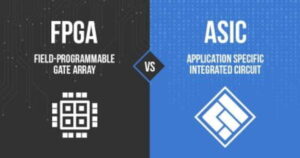Introduction:
HDLBits is an invaluable online resource that revolutionizes the learning experience of digital logic using the Verilog hardware description language. This platform offers a collection of digital circuit design exercises and an online judge, providing immediate feedback on code correctness and facilitating effective learning. Created by Henry Wong, HDLBits addresses the challenges faced by learners in digital logic, ensuring that students have ample opportunities to practice and refine their circuit design skills. In this blog post, we’ll delve into the significance of HDLBits and how it aids learners in mastering digital circuit design.
Join Our WhatsApp Community to discuss career, semiconductors & AI
The Need for HDLBits:
Digital logic is a fundamental aspect of electrical and computer engineering, emphasizing practical application and hands-on experience. Students often struggle to gain sufficient practice in circuit design, leading to difficulties in design and debugging during labs and exams. The initial learning curve can be steep, compounded by the challenge of learning a new language and navigating complex software packages. Additionally, a lack of exercises with timely feedback further impedes the learning process. HDLBits was conceived to overcome these obstacles and provide a platform where learners can enhance their fluency in digital logic efficiently.
Read More: 5 Emerging Trends in VLSI That Will Make You In-Demand
HDLBits Empowering Learners through Practice:
Fluency in any language, including hardware description languages like Verilog, is best acquired through consistent practice. However, getting sufficient practice can be challenging due to the initial learning curve and the scarcity of suitable exercises. HDLBits aims to bridge this gap by offering a plethora of short problems with concise solutions. Learners can submit their code and receive immediate feedback, allowing them to correct errors and improve their understanding swiftly.
Read More: 5 ways to do Networking for VLSI Job as Fresher
Immediate Feedback for Enhanced Learning:
One of the significant advantages of HDLBits is its integrated online judge, which evaluates submitted code against reference solutions. This feature provides immediate feedback to learners, highlighting any discrepancies and offering insights into potential debugging opportunities. Timely feedback is crucial in the learning process, enabling learners to learn from their mistakes and solidify their knowledge of digital circuit design.
Read More: 6 Reasons why VLSI is a Rewarding Career in next Decade
Addressing the Learning Curve and Exercise Challenges:
The learning curve associated with digital logic and hardware description languages can be daunting. HDLBits mitigates this challenge by simplifying the path to learning through its interactive platform. Learners can gradually enhance their understanding, building confidence in designing circuits without feeling overwhelmed.
Additionally, the scarcity of exercises with feedback is a common obstacle. HDLBits overcomes this by offering a comprehensive problem set with an online judge. Students can easily test their circuits by simply clicking “Submit and Compile,” fostering a culture of continuous improvement and proficiency.
Conclusion:
HDLBits emphasizes practical exercises and prompt feedback, enhancing digital circuit design fluency. It tackles the initial learning curve challenges and offers a structured platform for consistent practice. This innovation boosts students’ confidence and proficiency in hardware description languages, laying a strong foundation for mastering intricate digital circuits.








